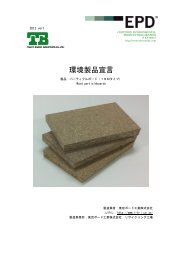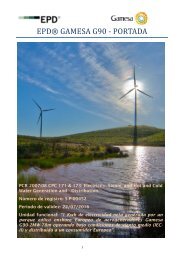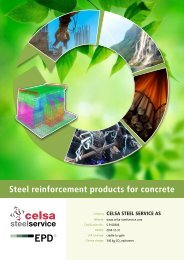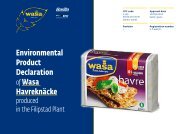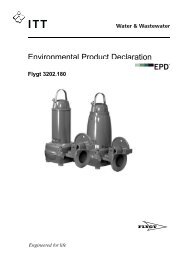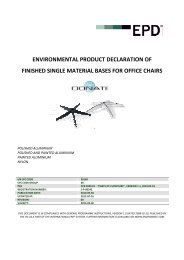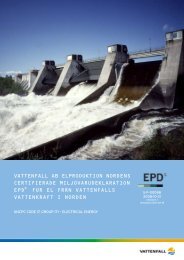ENVIRONMENTAL PRODUCT DECLARATION for IMPROVAC®1
ENVIRONMENTAL PRODUCT DECLARATION for IMPROVAC®1
ENVIRONMENTAL PRODUCT DECLARATION for IMPROVAC®1
You also want an ePaper? Increase the reach of your titles
YUMPU automatically turns print PDFs into web optimized ePapers that Google loves.
obtained by regional coordinators 9 who know the sector and have an appreciation of the existingrealities at the local level. Each coordinator managed a macro-region, contributing to data collectionon a global scale.Customized LCA questionnaires were used to gather in-depth in<strong>for</strong>mation about all aspects of the farmsystem (<strong>for</strong> example, energy use, feed and water consumption, animal care, air emissions and manuremanagement, fi nishing and harvest data), ultimately providing a complete picture of the environmentalburden of the baseline system. To assess the burden of the Improvac system, data from study trialreports conducted around the world (verifi ed reports of Improvac studies involving third parties whichcontain details of diet composition, feed intake, weight of animals to be slaughtered and other relevantdata) were applied to the baseline data in order to allow a calculation of the environmental burdenof the Improvac system with respect to a baseline scenario in which young, male pigs are physicallycastrated.Data was obtained from farms and slaughterhouses in China, Japan, The Netherlands, France, Italy,UK, Canada, Mexico, Chile and Brazil. In addition to these data, selected literature sources fromAustralia and USA as indicated in the references chapter were utilized in the LCA model.Functional UnitImprovac is an immunological product that effectively and safely reduces boartaint 10 by using the pig’simmune system to prevent the accumulation of androstenone and skatole in male pigs. The mode ofaction is sometimes referred to as immunological castration and, as noted previously, it is an alternativeto physical castration. Two doses (2 ml/dose) represent the exact quantity of Improvac that is thenecessary to obtain the full effect in one animal.With regard to the Improvac use phase, a functional unit was defi ned on multiple levels relating theuse of two doses of the vaccine to a particular output. The primary output is the live pig (kg live-weight),but values also have been calculated <strong>for</strong> the pig carcass (kg of carcass after dressing) and boneless/fatless pork meat at the gate of the slaughterhouse (kg of lean meat), as these are more relevantmeasurements <strong>for</strong> some companies in the pork production chain. 11Extending the functional unit defi nition to include three different outputs provides a complete overviewof the system, from Improvac production to pork meat that is ready <strong>for</strong> transport to retail outlets.Packaging and transportation to retail outlets and to the consumer are not included in the analysis.The decision to include LCA results on mass of live-weight pig and mass of pork meat refl ects theopportunity to more completely describe the Improvac system with respect to the baseline scenario thatis represented by the physical castrated pig system.10 As noted previously, boar taint is an offensive odor and taste evident in meat from some intact male pigs due to the accumulation in fat tissue of primarily two substances—androstenone(a testicular steroid) and skatole (a product of microbial tryptophan breakdown in the gut).11 Dressing refers to the process of preparing a pig carcass, including removal of offal. Lean meat is defi ned as “fat free lean”, which essentially means muscle tissue; the value is oftenexpressed as a percentage of carcass weight. It is an important parameter in the industry and is often used as part of the basis <strong>for</strong> payment to pig producers.7



